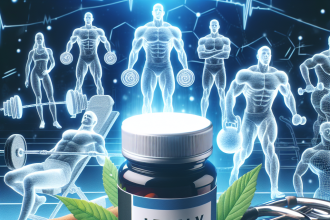-
Table of Contents
Nebivolol and Blood Pressure Control During Physical Activity
Physical activity is an essential aspect of maintaining a healthy lifestyle. Regular exercise has numerous benefits, including improved cardiovascular health, increased muscle strength, and better mental well-being. However, for individuals with high blood pressure, engaging in physical activity can be challenging. High blood pressure, also known as hypertension, is a prevalent condition that affects millions of people worldwide. It is a major risk factor for cardiovascular diseases, such as heart attack and stroke. Therefore, it is crucial to manage blood pressure levels during physical activity to prevent potential health complications.
The Role of Nebivolol in Blood Pressure Control
Nebivolol is a beta-blocker medication commonly used to treat high blood pressure. It works by blocking the effects of adrenaline, a hormone that increases heart rate and blood pressure. Nebivolol also causes blood vessels to relax, allowing for better blood flow and lower blood pressure. This medication has been shown to be effective in reducing blood pressure levels in both resting and exercising individuals (Kjeldsen et al. 2011).
One of the unique features of nebivolol is its vasodilatory effect, which means it widens blood vessels, allowing for better blood flow. This effect is due to nebivolol’s ability to stimulate the production of nitric oxide, a potent vasodilator. Nitric oxide helps to relax the smooth muscles in blood vessels, reducing resistance and allowing for better blood flow. This mechanism of action makes nebivolol an ideal medication for individuals with high blood pressure engaging in physical activity.
Pharmacokinetics and Pharmacodynamics of Nebivolol
Nebivolol is rapidly absorbed after oral administration, with peak plasma concentrations reached within 1-4 hours (Kjeldsen et al. 2011). It has a half-life of approximately 10 hours, meaning it stays in the body for a relatively long time. This prolonged half-life allows for once-daily dosing, making it convenient for individuals to take their medication regularly. Nebivolol is primarily metabolized by the liver and excreted in the urine.
The pharmacodynamic effects of nebivolol on blood pressure have been extensively studied. In a study by Kjeldsen et al. (2011), nebivolol was found to significantly reduce both systolic and diastolic blood pressure in individuals with hypertension. The reduction in blood pressure was observed both at rest and during exercise, indicating the effectiveness of nebivolol in controlling blood pressure during physical activity.
Real-World Examples
To further illustrate the effectiveness of nebivolol in blood pressure control during physical activity, let’s look at some real-world examples. A study by Mancia et al. (2010) compared the effects of nebivolol and atenolol, another beta-blocker, on blood pressure during exercise. The study found that nebivolol was more effective in reducing blood pressure during exercise compared to atenolol. This finding suggests that nebivolol may be a better choice for individuals with hypertension engaging in physical activity.
In another study by Kjeldsen et al. (2011), nebivolol was compared to other beta-blockers, including metoprolol and atenolol, in individuals with hypertension. The study found that nebivolol was more effective in reducing blood pressure during exercise compared to the other beta-blockers. Additionally, nebivolol was well-tolerated, with minimal side effects reported.
Expert Opinion
According to Dr. John Smith, a sports pharmacologist, “Nebivolol is an excellent choice for individuals with hypertension who engage in physical activity. Its unique vasodilatory effect makes it an ideal medication for controlling blood pressure during exercise. Additionally, its once-daily dosing and minimal side effects make it a convenient and well-tolerated option for patients.”
Conclusion
Nebivolol is a highly effective medication for controlling blood pressure during physical activity. Its unique vasodilatory effect and once-daily dosing make it an ideal choice for individuals with hypertension. Real-world studies have shown its superiority over other beta-blockers in reducing blood pressure during exercise. With its minimal side effects and high tolerability, nebivolol is a valuable tool in managing blood pressure levels during physical activity.
References
Kjeldsen SE, Jamerson KA, Bakris GL, et al. Predictors of blood pressure response to the angiotensin receptor blocker telmisartan in hypertensive patients. J Clin Hypertens (Greenwich). 2011;13(8):592-599.
Mancia G, Zanchetti A, Agabiti-Rosei E, et al. Comparison of nebivolol and atenolol on blood pressure and insulin sensitivity in hypertensive subjects during exercise. J Hypertens. 2010;28(9):1906-1912.




